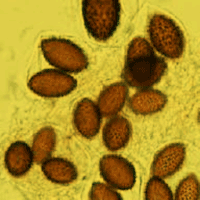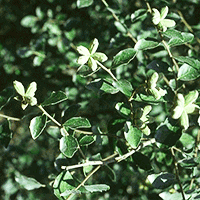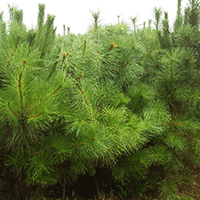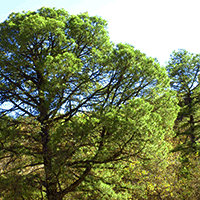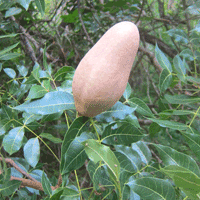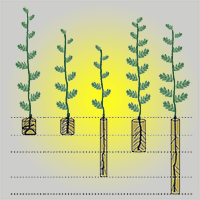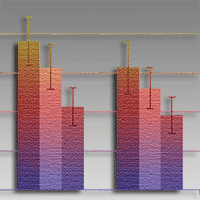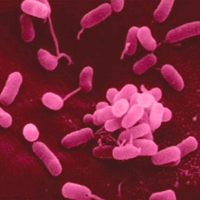
Controlled-release fertilizers combined with Pseudomonas fluorescens rhizobacteria inoculum improve growth in Pinus halepensis seedlings
Jose Alfonso Dominguez-Nuñez (1) , Daniel Delgado-Alvez (1), Marta Berrocal-Lobo (1), Analía Anriquez (2), Ada Albanesi (2)
iForest - Biogeosciences and Forestry, Volume 8, Issue 1, Pages 12-18 (2015)
doi: https://doi.org/10.3832/ifor1110-007
Published: May 12, 2014 - Copyright © 2015 SISEF
Research Articles
Abstract
Pinus halepensis seedlings are currently used to regenerate arid Mediterranean regions. Optimized methods for seedling fertilization in nurseries improve plant growth and are essential for successful reforestation. Previously, we showed that inoculation of P. halepensis seedlings with Pseudomonas fluorescens CECT 844 rhizobacteria improved plant growth and N uptake. The aim of this study was to determine the physiological and morphological response of P. halepensis seedlings to a combined treatment including controlled-release fertilization and inoculation with the rhizobacterium P. fluorescens. P. halepensis seedlings were grown in a nursery under well-watered conditions and were fertilized (F), inoculated with P. fluorescens (Ps) or fertilized and inoculated (F x Ps). Growth and water parameters (osmotic potential at both full and zero turgor and modulus of elasticity) were measured in seedlings under each treatment. The total N, P, K, Ca, Mg and Fe contents and concentrations in seedling roots and shoots were also measured. Finally, root growth potential was estimated. F x Ps increased both seedling growth and nutrient uptake compared with the independent treatments. Interestingly, amendment with rhizobacteria had a slight negative effect on osmotic potential and P uptake, which was lessened by combining Ps with F. The present work shows that F x Ps is highly efficient for improving the quality of forest seedlings in nurseries. As such, F x Ps represents a potential alternative treatment that could reduce contaminant emissions and increase microbiota soil regeneration in degraded soils.
Keywords
Controlled-release Fertilization, Rhizobacteria, Pinus halepensis, Water Parameters, Mineral Nutrition, Nursery, Root Growth Potential, Osmotic Potential
Authors’ Info
Authors’ address
Daniel Delgado-Alvez
Marta Berrocal-Lobo
E.T.S.I Montes & E.U.I.T Forestal, Polytechnic University of Madrid, Av/da Ciudad Universitaria s/n, E-28040 Madrid (Spain)
Ada Albanesi
Faculty of Agronomy & Agroindustries, National University of Santiago del Estero, Av/da Belgrano (S) 1912, 4200 Santiago del Estero (Argentina)
Corresponding author
Paper Info
Citation
Dominguez-Nuñez JA, Delgado-Alvez D, Berrocal-Lobo M, Anriquez A, Albanesi A (2015). Controlled-release fertilizers combined with Pseudomonas fluorescens rhizobacteria inoculum improve growth in Pinus halepensis seedlings. iForest 8: 12-18. - doi: 10.3832/ifor1110-007
Academic Editor
Roberto Tognetti
Paper history
Received: Aug 20, 2013
Accepted: Dec 26, 2013
First online: May 12, 2014
Publication Date: Feb 02, 2015
Publication Time: 4.57 months
Copyright Information
© SISEF - The Italian Society of Silviculture and Forest Ecology 2015
Open Access
This article is distributed under the terms of the Creative Commons Attribution-Non Commercial 4.0 International (https://creativecommons.org/licenses/by-nc/4.0/), which permits unrestricted use, distribution, and reproduction in any medium, provided you give appropriate credit to the original author(s) and the source, provide a link to the Creative Commons license, and indicate if changes were made.
Web Metrics
Breakdown by View Type
Article Usage
Total Article Views: 54722
(from publication date up to now)
Breakdown by View Type
HTML Page Views: 45599
Abstract Page Views: 3590
PDF Downloads: 4188
Citation/Reference Downloads: 18
XML Downloads: 1327
Web Metrics
Days since publication: 4230
Overall contacts: 54722
Avg. contacts per week: 90.56
Citation Metrics
Article Citations
Article citations are based on data periodically collected from the Clarivate Web of Science web site
(last update: Mar 2025)
Total number of cites (since 2015): 4
Average cites per year: 0.36
Publication Metrics
by Dimensions ©
Articles citing this article
List of the papers citing this article based on CrossRef Cited-by.
References
Microbial ecology of the rhizosphere. In: “Soil Microbial Ecology” (Metting FBJ ed). Marcel Dekker, New York, USA, pp. 27-63.
Gscholar
Comportamiento de planta de Pinus pinea en vivero y campo: ensayos de técnicas de cultivo de planta, fertilización y aplicación de herbicidas [Behaviour of Pinus pinea plants in nursery and field: Trials of plant production, fertilisation and herbicides]. Investigacion Agraria: Produccion y Proteccion Vegetal 8: 335-359. [in Spanish]
Gscholar
Growth of forest plants (pine and holm-oak) inoculated with rhizobacteria: relationship with microbial community structure and biological activity of its rhizosphere. Environmental and Experimental Botany 52 (3): 239-251.
CrossRef | Gscholar
Los fertilizantes de liberación controlada lenta aplicados a la producción de planta forestal de vivero. Efecto de dosis y formulaciones sobre la calidad de Pinus halepensis Mill. [Slow-controlled release fertilizers used in nursery geedling productions. Doses and formulations effects on Pinus halepensis Mill. seedling quality]. Investigacion Agraria: Sistemas y Recursos Forestales 8 (1): 207-228. [in Spanish]
Gscholar
El potencial de crecimiento radical en planta de vivero de Pinus halepensis Mill. Influencia de la fertilización [Root growth potential in nursery of Pinus halepensis Mill seedlings. Fertilization effect]. Investigacion Agraria: Sistemas y Recursos Forestales 12 (1): 51-60. [in Spanish]
Gscholar
Responses of Pinus halepensis growth, soil microbial catabolic functions and phosphate-solubilizing bacteria after rock phosphate amendment and ectomycorrhizal inoculation. Plant and Soil 320: 169-179.
CrossRef | Gscholar
Genomic and genetic analyses of diversity and plant interactions of Pseudomonas fluorescens. Genome Biology 10 (5): R51.
CrossRef | Gscholar
Water in tissues and cells. In: “Encyclopedia of Plant Physiology” (Lange OL, Nobel PS, Osmond CB, Ziegler H eds). New Series, Vol. 12B, Physiological Plant Ecology II, Springer-Verlag, Berlin, Germany, pp. 36-77.
Gscholar
Effects of water stress conditioning on the water relations, root growth capacity, and the nitrogen an non-structural carbohydrate concentration of Pinus halepensis Mill. (Aleppo pine) seedlings. Annals of Forest Science 56: 459-465.
CrossRef | Gscholar

